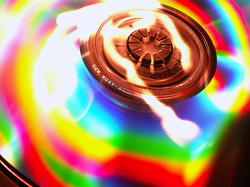
Throughout the very first period, the data is arranged into what's called an 'optical disk image, I.e. creating an image that holds the information that will subsequently be transferred onto the disc. To make this image, all the info that is to go onto the disk is organized into one file and prepared to satisfy what's going to be studying the CD. This not only enables the readers to comprehend the info contained in the disk, but also where in fact the info is contained in the disk so it can go directly to different parts of the info, for instance a special music track.
When the information is collected and ready for the Disc Copying to occur, it is then set out on the disk with a direct in, or start point, to tell the CD reader where the information starts in the drive, a table of contents to describe where and precisely what the information is, and a lead out indicate suggest where the info has concluded.
Most apps for CD Duplication use the normal file system ISO9660, or perhaps the CDFS (Compact Disk Document System). This standardisation was developed in order that CDs may function in most CD players and visitors. Inside this record system are different modes, with CD ROM Mode 1 used for CD-ROM and CD-ROMs Mode 2 Form 2 used for video and sound data.
They do however require the correct connectivity, while both types of Replication are incorporated into most recorders now. Again, that is generally standard, with internal recorder drives utilizing the Parallel ATA contacts and external drives utilizing the PATA jump connection.
Laser technology is definitely a vital element of CD Replication technology and lasers are consistently being developed more. The wavelength of the lasers utilized has had to fall to be able to bunch it in, together with the corresponding laser used in the viewers additionally needed to be this shorter duration, as more and more information continues to be required to match onto just one disc.
Just hop over to cd duplication for current opinion.
Nowadays lasers are employed in most instances to compose the info to the optical disc during CD Replication. These lasers must be calibrated for the correct strength, which well rely on the type of disk being employed, what is heading onfor the drive and just how. An organic dye is used by read only discs at first glance for that expression versions, while re-write discs get a metal alloy that's melted to create reflection variations. Still, an alternate laser calibration is required to both compose and examine each kind of disk, because the comparison in reflectivity is different. While re-write discs have a lower expression variation which has lower quality nevertheless, the greater flexibility of the utilization of the disc because of its rewritable properties, read only discs have a larger reflection variation, and thus usually better quality.
Naturally, the lasers accustomed to Replicate a disk are substantially stronger than those used to read it, as the writing laser must change the surface qualities of the dvd while the audience laser needs to leave the surface unaltered. The saving lasers are called Laserlight Recorders (LBRs) and in most circumstances are now able to be varied to generate the various wavelengths required for various types of disks.
 RSS Feed
RSS Feed